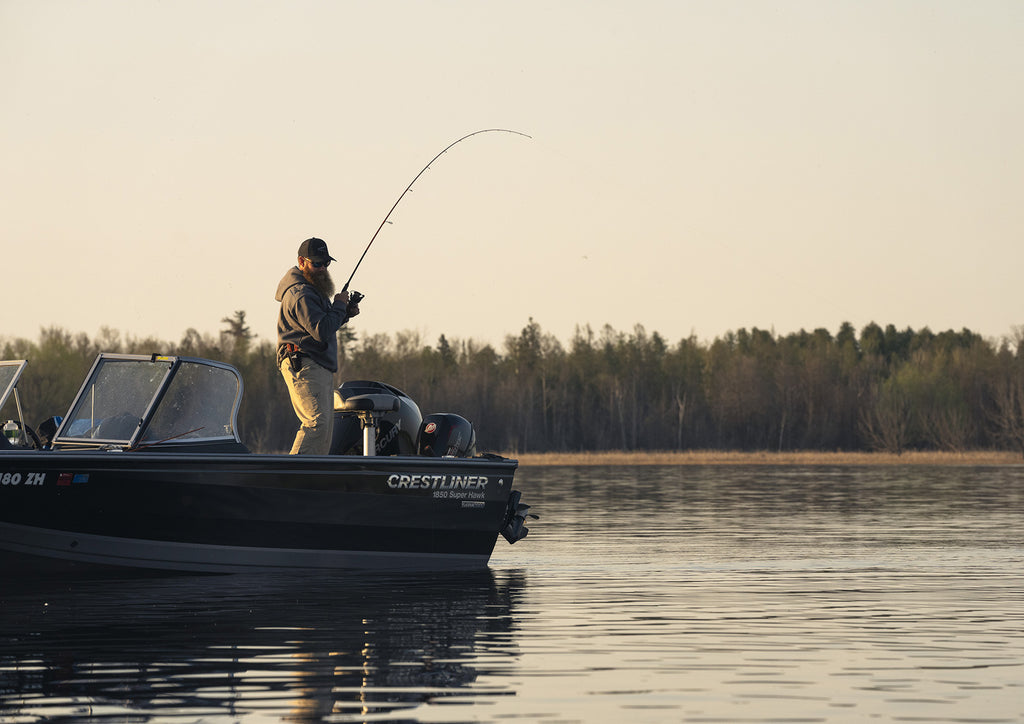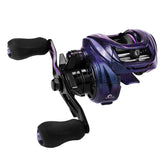
How to Pick The Right Kind Of Fishing Line
When you're out fishing, the last thing you want to happen is for your line to break. This can be frustrating and cause you to lose a lot of fish. That's why it's essential to pick the right kind of fishing line for the type of fishing you're doing.
Fishing line is something that every angler needs, but picking the right kind can be tricky. In this article, we will discuss the different types of fishing line and how to choose the right one for you.
3 Common Types Of Fishing Line
There are three types of fishing lines:
- Monofilament
- Fluorocarbon
- Braided
Monofilament is the most common type of fishing line. It's made from a single strand of material and is very strong.
Fluorocarbon is a newer type of fishing line that's made from two strands of material. It's very strong and has a higher breaking strength than monofilament.
A braided fishing line is made from multiple strands of material. It's very strong and has a high abrasion resistance.

1.Monofilament Fishing Line
Best For Beginners As It Is Easy To Use And Relatively Cheap.
If you're just starting out fishing, then a monofilament fishing line is the best option for you. It's easy to use and relatively cheap, so you won't have to break the bank to get started. The monofilament line is also suitable for baitcasting reels and spinning reels.
Monofilament is also very sensitive, so it can be used to detect even the slightest bite from a fish. However, monofilament is also less visible in water than other types of fishing line, so it's not the best choice if you're trying to fish in clear water.
It also has a tendency to stretch, so it's not the best choice for fishing in deep water. If you're fishing in deep water, then you'll want to use a fluorocarbon or braided fishing line.
2. Braided Fishing Line
Stronger And More Durable Than Monofilament, But Also More Expensive
Braided fishing line is the way to go if you're looking for a stronger and more durable type of fishing line. It's made from multiple strands of material, so it's much stronger than monofilament. It is also more resistant to abrasion, so that it will last longer.
However, braided fishing line is also more expensive than monofilament. Monofilament is the better option if you're on a budget. But if you're looking for the strongest and most durable fishing line, then braided is your best bet.
Braided line is also quite visible in water, so it's a good choice if you're fishing in clear water. However, because it's so visible, it can also spook fish. So if you're trying to catch fish that are easily spooked, then you'll want to use the fluorocarbon line.
3. Fluorocarbon Fishing Line
Invisible in the water, making it perfect for stealthy anglers; can be more expensive than other types of line.
If you're looking for a line that's invisible in the water, then the fluorocarbon fishing line is the way to go. The reason it's super strong is that it's made from two strands of material. This makes it very difficult for fish to see, making it perfect for stealthy anglers.
Factors To Consider To Choose The Right Kind Of Fishing Line
Now that we've gone over the different types of fishing line, it's time to discuss how to choose the right one for you. You'll need to consider a few factors before making your decision.
Type Of Fish You Need To Catch
When choosing a fishing line, you need to consider the type of fish you will catch. You'll need a stronger line if you're going after big fish. You can use a lighter line if you're just going after smaller fish.
Size Of The Line
The type of fish you will catch will also determine the size of the line. A thicker line can handle a bigger fish, while a thinner line will be better for smaller fish.
Type Of Reel You're Using
The type of reel you're using also plays a vital role. For example, a spinning reel can use any type of line, but a baitcasting reel needs a heavier line.
Strength Of The Line
The strength of the line is also an essential factor to consider. If you're fishing in rough waters, you'll need a stronger line.
Fishing Line's Stretch
The fishing line's stretch holds great importance in this business. Some types of fishing line, like monofilament, have a tendency to stretch. This can be good or bad, depending on your needs.
If you're fishing in deep water, you'll want a line that doesn't stretch much to feel when a fish bites. However, if you're fishing in shallow water, a little stretch can be a good thing. It can help you detect even the slightest bite from a fish.
It's important to note that all types of fishing line will stretch to some degree. The key is to find the right balance for your needs.
We recommend going for a fishing line that has low stretch if you're fishing in deep water and high stretch if you're fishing in shallow water.
Remember that the amount of stretch also varies depending on the material of the fishing line. For example, fluorocarbon lines have less stretch than monofilament lines.
Water Conditions
The water conditions will also affect the type of line you need to use. If you're fishing in clear waters, you can use a lighter line. But if you're fishing in murky waters, you'll need a heavier line so the fish can't see it.
Budget
Your budget is also an important factor to consider. If you're on a tight budget, then you might want to stick with monofilament. But if you want the best possible line, you'll need to spend more on a braided or fluorocarbon line.
Conclusion
We hope this guide has helped you understand the types of fishing line and how to pick the right one for your fishing needs. So, do the research and choose wisely.













